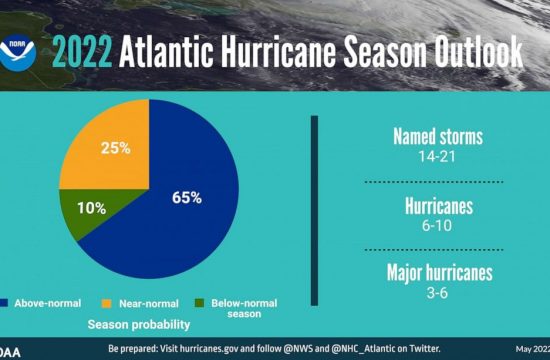The storms will move east through the weekend.
4 min read
Summer storms on Wednesday brought at least four reported tornadoes in parts of the South, including an EF-1 tornado with winds up to 110 mph in Baton Rouge, Louisiana. The National Weather Service office in New Orleans says there were several small tornadoes in the area on Wednesday and storm surveys are still ongoing.
The storms also brought flash flooding where there were reports of water covered roads. Training thunderstorms, just north and west of the Houston metro area, have already brought up 3 to 6 inches of rain Thursday morning, and some flooding is ongoing in the region.
There are still flash flood alerts for parts of southern Texas, Louisiana and Mississippi for the slow-moving thunderstorms that will continue to fire up Thursday.
Meanwhile, in the Midwest, a new system will straddle the U.S.-Canadian border through the Great Lakes over the next few days, and the associated cold front will spark off thunderstorms from the Midwest to the Northeast.
The first severe weather threat in the region will be Thursday from Nebraska to western Minnesota. The threat shifts south and east on Friday from northeast Kansas to Michigan, which could impact cities like Chicago, Milwaukee and Detroit. The storms will slide over on Sunday to parts of the Northeast, including New York, Pennsylvania and New Jersey.
This mainly looks to be a damaging wind threat, but a couple of brief tornadoes will be possible as well.
The result of both of these ongoing summer storm systems will bring a good amount of rainfall in the slowest moving storms. Locally 2 to 3 inches of rainfall will be possible in any slow-moving storm, and therefore flash flooding remains a concern.
Additionally, high pressure moving into the Gulf of Mexico will bring quite a bit of heat to parts of Florida Thursday and Friday, with the heat index expected to soar well over 100 degrees, and locally as high as 110 degrees. Even by Florida standards, this is hot, and a few records will be possible on the western coast of Florida this week.
Moving west, Thursday will be peak heat for much of the region, with temperatures well above 100 degrees in parts of the Desert Southwest, and temperatures near and above 100 degrees in the central California Valleys. Relatively cooler air will arrive in the next few days.
For the most part, the fire threat has subsided in parts of Arizona, with only an elevated risk Thursday for fire spread. Unfortunately, the low pressure responsible for the “relative cool down” this weekend will also bring gusty winds, and a Critical Fire threat looks to be in sight for parts of Nevada, Utah and Arizona this weekend.











